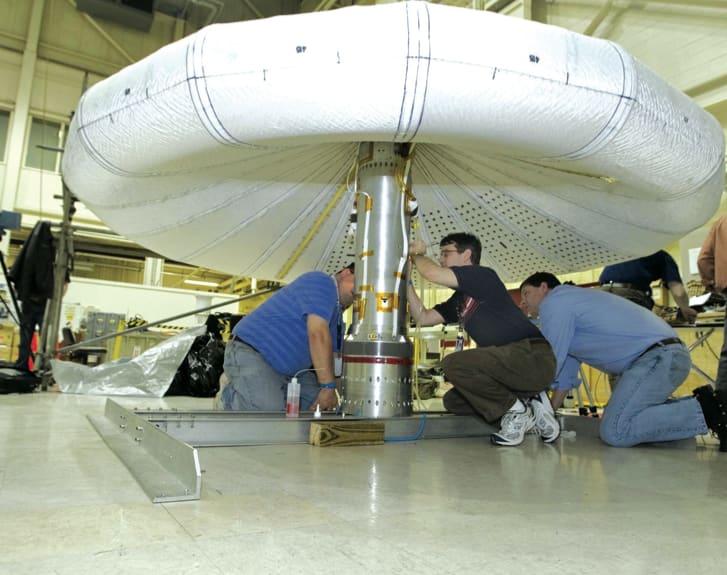This feature profiles NASA’s ten field centers located across the country. Each month, we’ll highlight a NASA center’s unique facilities, capabilities, and areas of research, as well as specific missions and projects underway at each center. If you are interested in partnering with a particular center, or in licensing specific technology, check out the More Information section at the end of each profile for contact information.
Langley Research Center in Hampton, VA, has always been innovative. By solving monumental technology challenges, including those that spawned the aviation industry and space travel, our researchers have earned a reputation for their expertise in research, development, and experimentation. Today is no different. We are looking at new ways to revolutionize airplanes and the air transportation system, to provide access to space, and to understand climate change. With our unique blend of aerosciences, structures and materials, atmospheric characterization, systems analysis, and entry, descent, and landing expertise, we work across all of NASA’s missions.
What We’re Doing

For rotorcraft, we are improving active control technologies for more efficient performance. We are working on operational and safety issues related to unmanned aircraft systems operating in the national airspace. Along with the FAA Surveillance and Broadcast Services Office, Aviation Communication & Surveillance Systems (MITRE), we’re developing procedures and applications for the Automatic Dependent Surveillance-Broadcast system to increase the efficiency of airport operations and reduce fuel burn.
To support exploration, we are collaborating with partners in government, industry, and academia on needed technologies for the next generation of launch, crew, and cargo vehicles able to go beyond Low Earth Orbit. Our expertise in space launch system aerodynamics, guidance, navigation and control, and structural and thermal analyses is being used across the spectrum of vehicle development, including the launch abort system. For both spacecraft and inflatable habitats, Langley’s experts are constructing lightweight materials and structures to make space travel more economical, more efficient, and safer from radiation. We’re building a 2.65-meter aeroshell with an advanced thermal protection system and structure to demonstrate manufacturability and performance at relevant scale. Our new Hydro Impact Basin will enable validating and certifying future space vehicles for water landings.
Entry, Descent, and Landing (EDL) is one of our “sweet spots.” We are developing rigid and flexible thermal protection systems and supersonic and hypersonic inflatable aerodynamic decelerators to allow astronauts to land with exploration-class payloads on planetary surfaces. For the Mars Science Laboratory, we will integrate a suite of sensors to measure atmospheric conditions and the craft’s heat shield performance during its entry and descent.

Technical Capabilities
From concept to flight, our end-to-end technical capabilities and facilities enable the experimentation, testing, and validation needed to advance next-generation aerospace technologies. Langley has many unparalleled facilities, such as the National Transonic Facility, the Transonic Dynamics Tunnel, and the 8-Foot-High-Temperature Tunnel. Our ability to test from subsonic to hypersonic flight, along with our advanced labs and simulators, provides a unique environment for developing game-changing technologies and systems for future air and space transportation.
Often, we are asked to address international issues and to respond to urgent national problems. Recent examples include rescuing the Chilean miners, crash investigations, oil spills, and volcanic ash mitigation.
Where Do The Technologies Go?

More Information
An ever-accelerating pace of change and rapid advancement make collaboration a critical component of our strategy for success. We look forward to working with others all over the world as we continue to develop innovative solutions for the future. For more information, contact Michele Ferebee, Manager of Partnership, Innovation, and Commercial Space, at

